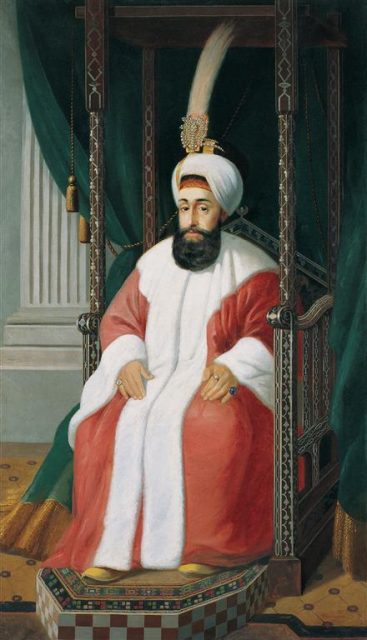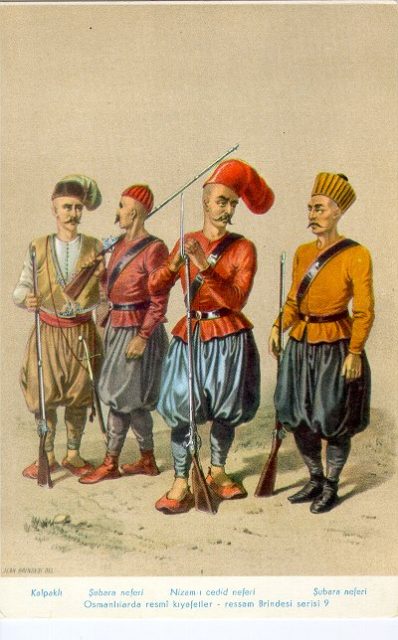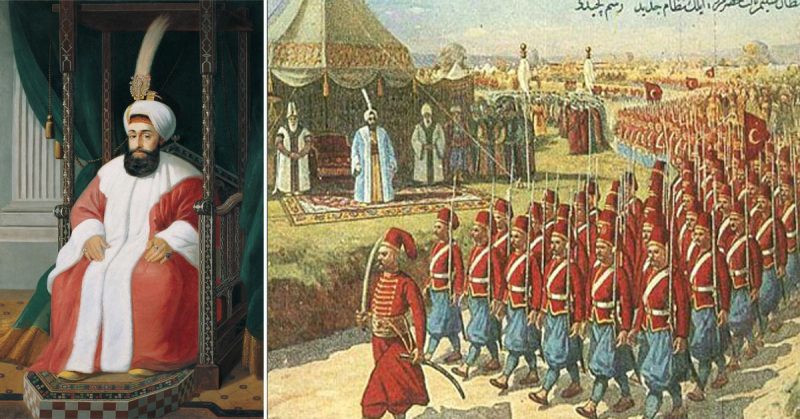War History Online proudly presents this Guest Piece from Taşkın Bora Dayangaç
The Birth of Reformation
The Nizam-ı Cedid Army was created to reform the Ottoman Army after they suffered two unsuccessful sieges against Vienna. To compete with European countries, the Sultan Selim III sent his ambassador, the very intellectual and cultivated Ebubekir Ratip, to Austria. He returned with a 500-page report about European society and their military systems and gave it to Selim III. One of the main suggestions was that they amend the Janissary Army, an elite corps in the army of the Ottoman Empire.
They first tried to reform the Janissary barracks. Despite their best efforts, they were unsuccessful. After many attempts, Selim III realized that new reforms could not be applied to the barracks and he decided to create a new army branch, the Nizam-ı Cedid or New Order.
The Sparks of a New Class of Units
The Nizam-ı Cedid was established as a different type of unit in the army to prevent objections from the existing Janissary troops. Mustafa Reşit Pasha was given command of it. Barracks for the new units were built in Levent in 1794. Selim III invited Swedish and French Officers to train the soldiers with the new methods and tactics of the Napoleonic Era. However, after several years the number of officers had not increased above 30, and so Selim III decided to create a whole new army. But it came at a price.

Selim III had significant opposition to his new army reforms from both the ranks and his governors. When he left the capital for war and marched away with his army, the arena was left to his opposers. They published lots of propaganda, mostly from mosques, telling people that “A Sultan making their soldiers wear trousers and jackets is not eligible to govern and the god won’t assist him.”
Overcoming the opposition from his government and the military he accomplished his reforms. The Nizam-ı Cedid successfully participated in their first combat in Egypt against Napoleon which gave the empire trust in its new army. Defeating the French and removing them from the region had been intensely desired by the previous padishahs. The victory in Egypt gave assurance and positiveness to the Sultan. Later the Nizam-ı Cedid Army became the main army of the empire replacing the Janissaries. The opposers, however, having seen the success of the new military, still saw it as a threat to themselves. The situation made the Janissaries make an alliance with the opposers.
Uprisings and Rebellions
As the first act of rebellion, the state governors in the Balkans altered conscription laws for the new army which obtained its manpower from those regions. To deal with the situation the governor of Karaman (today’s inner Anatolia region) Abdurrahman Pasha, who supported efforts to spread the new army reform to the Anatolian area, was sent to handle the opposing group of governors in Edirne. After the Abdurrahman Pasha’s arrival the Vezhir Ismail Pasha, who, in his heart opposed the new army, became jealous and with the support of Ulema and the Janissaries he dealt with the Mustafa. He sent a message to Tirsinikoğlu who was one of the leading opposers in the East to stand against Abdurrahman Pasha. After that Tirsinikoğlu cut off the heads of the warners that Abdurrahman Pasha had sent. This was known as the 2nd Edirne Event.

Afterwards, Abdurrahman Pasha went to Edirne with 24,000 soldiers of the newly formed Nizam-ı Cedid Army. Although he tried to end the rebellion, another rebellion kicked-off in the Tekirdağ causing Selim III to withdraw his army to protect women and children. To suppress the resistance, the Tirsinikoğlu Pasha was assassinated. It had the desired effect of discouraging the rebels and ending their rebellion.
By withdrawing the army, Selim III had taken a decisive act which also lowered unrest in other Eastern regions, by not enabling the separatists to initiate their own rebellions.
In 1807 the Ottoman Army moved to the Galicia Front under the command of Vezhir. Although the Nizam-ı Cedid Army was sent to assist the Janissaries who were clashing there with the Russians, they were not permitted to join the fight.
Vezhir gave the command of the army to Köse Musa Pasha. He and the head of Ulema Ataullah used an event which occurred in the Black Sea region to begin the uprising against Selim III.
The Last Uprising
It is known as the Kabakçı Mustafa Uprising. Musa Pasha underhandedly ordered around 1,500-2,000 trainees not wear the Nizam-ı Cedid uniforms. They then killed their own general on May 25, 1807, and lead by Kabakçı Mustafa Pasha; they marched on Istanbul.
Selim III’s advisors convinced him not to use the Nizam-ı Cedid army and not to treat the rebels harshly. But when Kabakçı Mustafa reached Istanbul he found his allies, the Janissaries and the Ulema. Musa Pasha used the insurrection and abolished the Nizam-ı Cedid. Kabakçı Mustafa wanted eleven men to be hung, but Selim only hung three of them. On the night of May 28, 1807, the idea of deposing Selim III became real and the reformer padishah Selim III, with the fatwa of Ataullah, was dethroned the next day.
